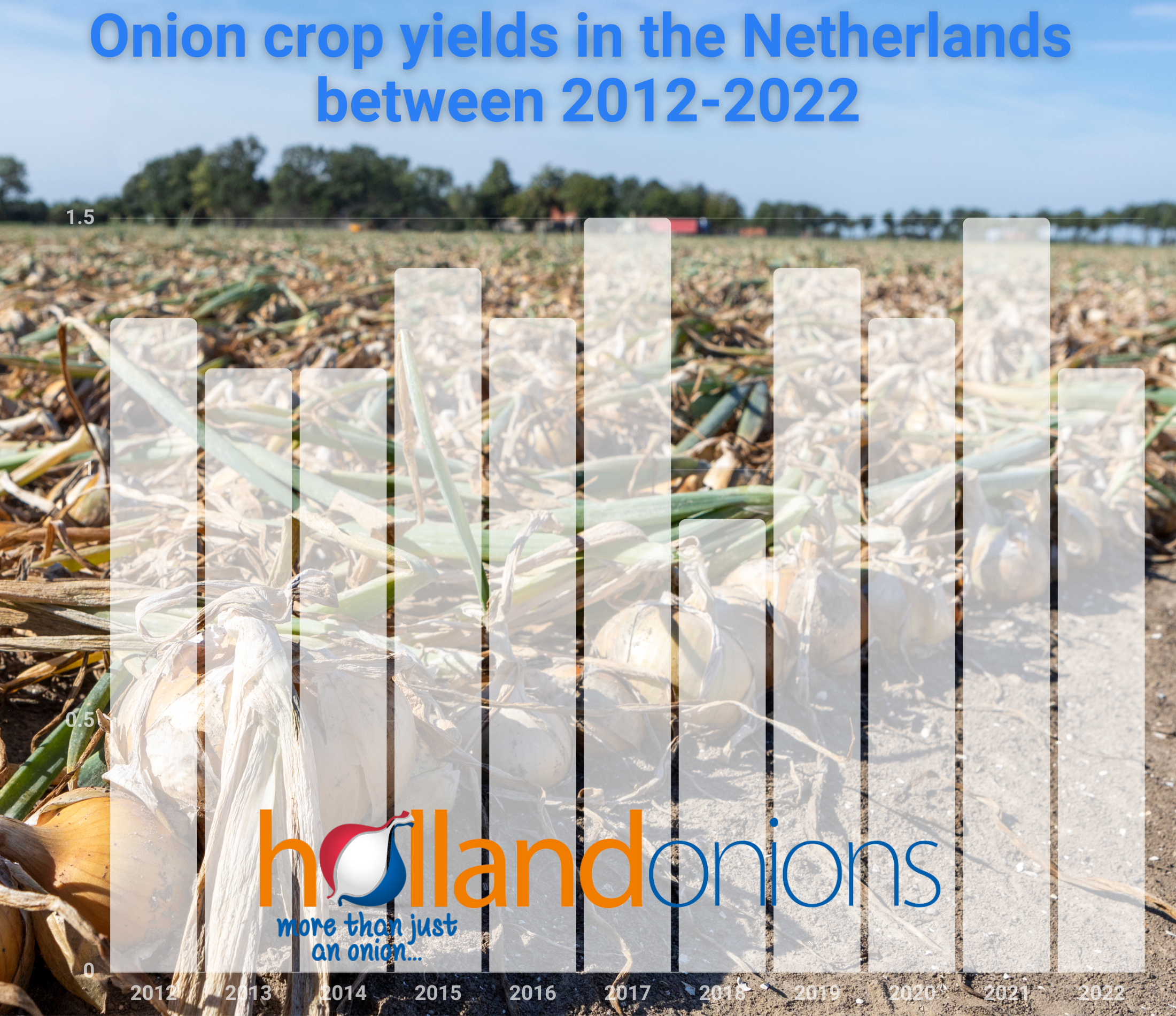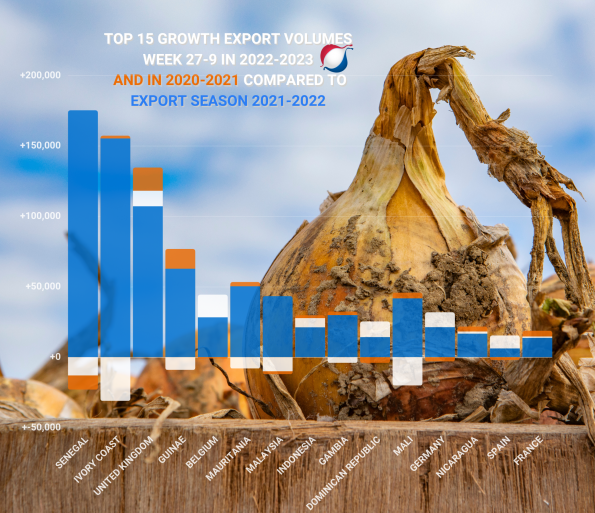different record for Holland Onions
The 2022-2023 export season will undoubtedly go down in the books as a historic year. The season will certainly not reach a record in terms of export volume, but in terms of export value, it just might be that for the first time ever in history, the Dutch onion trade exceeds more than half a billion in turnover for the first time ever in history.
Never before has the onion price gone upside down so often in such a short period of time. With a gross Dutch onion harvest yield that is 300,000 tons lower than last export season, a million tons less onions in Europe and elsewhere in the world also significantly lower yields due to extreme weather conditions and less use of expensive fertilizers.
Record amounts
Record amounts are currently being paid for Holland Onions. This millennium has never been paid so much for the crackling golden-yellow Dutch onion and that is (finally) good news for Dutch growers. An old Dutch saying is that the trade also earns more on a quarter than on a dime and that will also be the case with the onion harvest of 2022.
Lower gross harvest
The gross yield of seed onions has decreased by 17 percent in 2022 compared to a year earlier. According to the recently published definitive crop estimate of CBS (Statistics Netherlands), the gross yield of seed onions in 2022 amounted to 1.2 million tons, a decrease of 17 percent compared to the previous year. Although this is the lowest yield since 2019, it is equal to the harvest years 2013 and 2014. A total of 1 million tons of yellow, 0.2 million tons of red seed onions were harvested and 268 thousand tons of onion sets. The final determined total gross yield per hectare has therefore remained virtually the same compared to the harvest estimate at 44.5 tonnes per hectare. The ratio between yellow and red onions was slightly adjusted. Where the first estimate for yellow onions was 44.5 tons per hectare, one ton was added to 45.5 tons, while the red onions lost yield compared to the first estimate from 42.9 tons to 40 tons per hectare. The gross yield difference between yellow and red was therefore 5.5 tonnes per hectare, or 12 percent less kilos.

Global stagnation of onion yields
Onion yields are stagnating worldwide due to climate change and a reduction in the available agricultural area. As a result, incidental local shortages may arise more often. And that while consumption per capita has grown exponentially 'Twenty years ago the average consumption was 8 kilos per person on an annual basis, but that is now 13 kilos and could rise to 20 kilos in 2050', calculates onion foreman Gijsbrecht Gunter of the Dutch onion chain. He also emphasizes that about 92 percent of global onion production (106 million tons) is destined for the domestic, local market. The total export market is currently only 8 percent, or about 8.5 to 9 million tonnes. The Netherlands accounts for 20 percent of that international trade in onions.
Different volume ratio
With increasing consumption and declining yields, Gunter concludes that there are opportunities for the Netherlands. He expects an increasing demand from Asia and Africa in the first months of the marketing season. 'The volume ratio in the first and second half of the sales season was still 40-60 10 years ago, that has now completely reversed to 60-40 and may continue to 70-30.'
Run two thirds of the race
After two-thirds of the current export season it shows that total exports is lagging behind last season by 7%. At the moment, the export amounts to more than 935,000 tons, with the top 3 slightly changing compared to last season. What is striking is that the growth in exports to Senegal and Ivory Coast is seriously lagging behind last season, while exports to Great Britain remain unprecedentedly high and have even increased by almost 12,000 tonnes to more than 100,000 tonnes. The decline in growth to Ivory Coast and Senegal will have everything to do with the exceptionally high prices. A 25-kilo bale of Dutch onions is currently (early January 2023, ed.) on the market in Senegal for about 23 dollars. And that is a very hefty price for people who often only have a few dollars to spend per day.
Sharp rise in cost price
With a yield of 55 tons per ha, the Dutch onion grower averages a cost price of about 16 euros per 100 kilos, dry from the shed. At the moment, add a total of 12 euros for the processing chain - due to the high energy prices. This includes, in addition to transport from grower to processor and from processor to the port, costs for packaging. With average export costs per reefer container of 22 euros, the Holland Onion cannot currently arrive internationally for less than 50 euros per 100 kilos. On top of that there are import duties (which vary greatly per destination) and costs for further processing and transport to local markets, so that the Dutch onion costs almost 60 cents per kilo in terms of cost. That corresponds to about 14 euros per bale, whereby everything has been paid, but not much is yet being earned. The prices paid this season show that it is indeed lucrative to grow onions this season. At such prices, a farmer can remain a farmer, so to speak.
Top 15 and volume shift to Europe
In the top 15, we mainly see a shift in ranking after the top 3. Belgium has climbed from 8th position to fifth place. Our southern neighbors have already imported 17,000 tonnes more this season. And that actually applies to all neighboring European countries. Poland, Germany, Spain and Portugal are also well up, with Portugal recording the -proportionately- largest growth from just above 440 tons to over 3,600 tons. Germany climbs from 11.5 to almost 21,000 tons and Spain more than doubles imports compared to the previous season and thus enters the top 15. The aforementioned shortage of one million tons of onions within Europe means that the Dutch onion is in big demand in the second half of the export season.
What is also striking is the (renewed) entry of Israel in position 16 with more than 13,000 tons. Brazil is still just outside the top 15, but this season is good for 8,500 tonnes. This season, Australia is increasing the import of Holland Onions, which started somewhat hesitantly last year, even though it is still only 337 tonnes and therefore only a few containers. But whoever does not honor the small…
